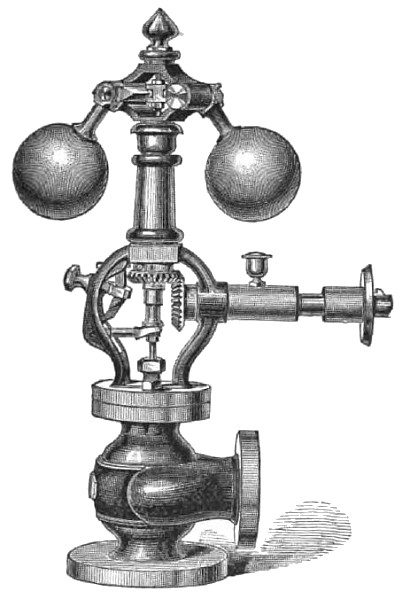 The Shive Governor
The Shive Governor
Shive Governor Works
These extensive works, which have won a world-wide reputation as the producer of the best and most scientifically constructed Governor now made, was originally located in the city of Philadelphia, from 1868 until 1873. At the latter date in order to extend the capacity of production and to secure facilities, which the present location offered, they were removed to where they now arc. The works are located about one mile from South Bethlehem, and consist of a Machine Shop, 80x34 feet, two stories in height, and a Foundry, 40x20 feet, also two stories in height; both are built substantially of stone, and supplied with the most complete appliances for" the manufacture of their specialties, most of which have been built especially for the purpose intended and every piece of machinery and all their tools are models of skill and correct workmanship, reaching in accuracy, attention to details and careful finish, the finest watch machinery of the country. Below we append a short description of the Shive Governor and a schedule of prices for the various sizes.
The Shive Governor possesses, in an eminent degree, all the qualities desirable and requisite in an efficient Governor. It is the only Governor in which the balls swing at angle to the radial line, resulting in greater delicacy of operation than can be obtained by a radial movement. The slightest increase or decrease in the amount of resistance to be overcome by the engine, is at once indicated by an alteration in the distance of the Governor balls, and a corresponding change in the steam supply valve. This mode of suspending the balls has the additional advantage of causing the Governor to wear longer, by reason of there being much less friction than in the old method of construction. The balls swing in most natural to freely suspend weights when the stem of the Governor begins to revolve, while the least retardation causes the balls to gain in the direction of rotation, and return toward their centre of revolution. The automatic safety check stops the engine when anything occurs to interfere with the action of the Governor, such as the breaking or falling off of the belt, or some accident to the gearing. At the same time, it does not interfere in the slightest degree with the efficiency of the Governor. The feeder will instantly change the speed of the engine to any extent while running, and also automatically take up any lost motion that may occur—thus making the Governor last longer. The valve is perfectly balanced in all positions, and is corrected simultaneously with any change of the speed in engine.
To all who use Steam Power—We put our Governor on any engine and warrant it to prove superior to all others and to do all we claim for it. If, after a fair trial, it does not, we will take it off at our own expense. No charge for boxing.
The testimonials received in favor of this Governor represents its use in the largest concerns in the United States, among which are the Bethlehem Iron Company, John Roach, Naefie and Levi, Ames' Iron Works, of Oswego, N. Y., and many others. The largest Governor ever made was built by these works, and is now in use by the Bethlehem Iron Company. Quite an extensive trade is engaged by the works, and much of it reaches Europe and South America. Watchman's Clocks and Detectors are also built here, and full descriptions arc given of them on application. Our mission is not to go into details, but to give the Shive Governor Works the prominence they merit as among the prominent industries of this Valley, by a brief notice of its origin and success.
Mr. M. C. Smylie, the proprietor, is a native of Philadelphia, where he was born in 1817, and is a son of John Smylie, formerly of the Adams Express Company, and has made the manufacture of Governors a special study, and it is stating but the simple fact when we say that in the matter of scientific construction and successful operation, the Shive Governor stands today without Its equal in the world.
Information Sources
- Manufacturing and Mercantile Resources of the Lehigh Valley, 1881, pg. 78